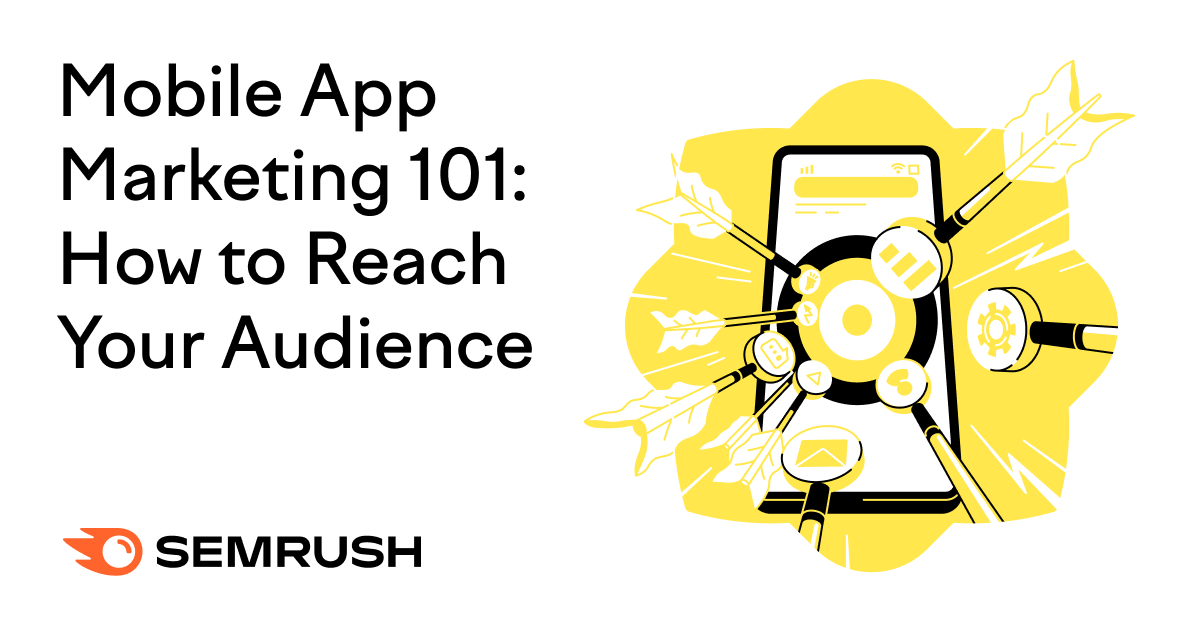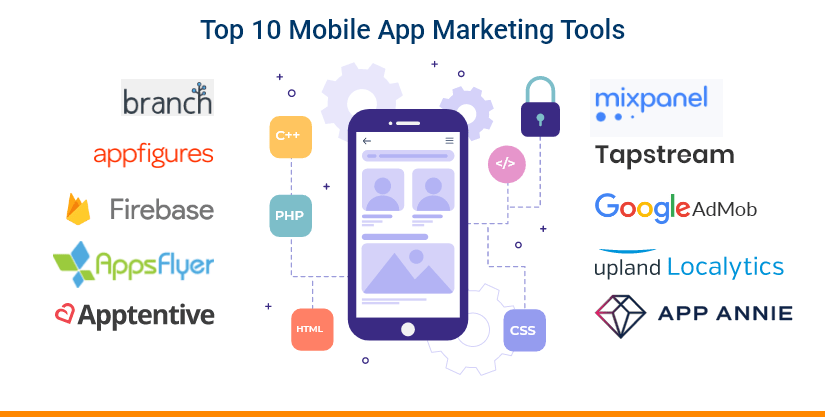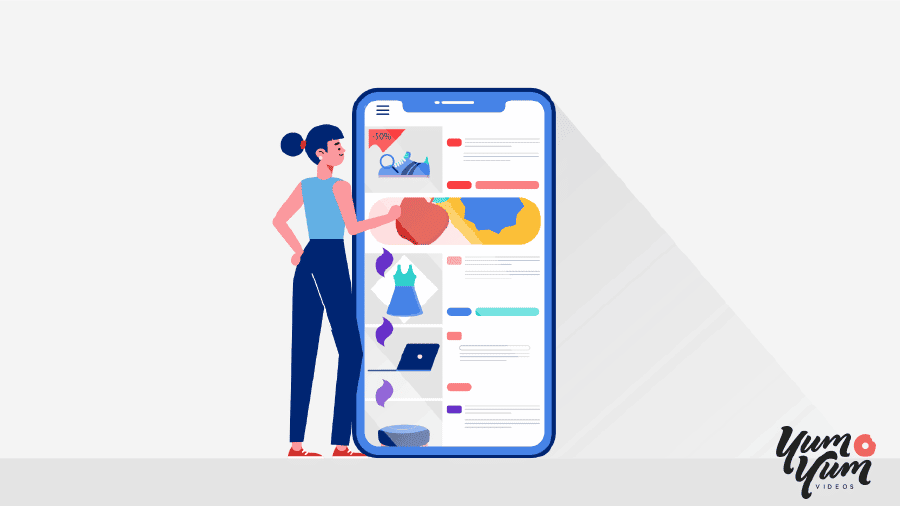Uncover the secrets to successful mobile app marketing strategies and learn how to captivate your audience like never before.

Image courtesy of via DALL-E 3
Table of Contents
Introduction to Mobile App Marketing
Mobile app marketing is a crucial aspect of promoting and growing your app in the digital world. With millions of apps available in app stores, it’s important to have a strategy in place to reach your target audience effectively. In this section, we will explore the basics of mobile app marketing and why understanding your audience is key to success.
What is Mobile App Marketing?
Mobile app marketing involves promoting your app to attract users and encourage them to download and engage with it. The primary goal of mobile app marketing is to increase visibility, drive downloads, and retain users over time. This can include various strategies such as social media marketing, app store optimization, running ads, and more. Essentially, mobile app marketing is about getting your app in front of the right people and convincing them to give it a try.
Why is Audience Important?
Your audience is the group of people who are most likely to be interested in and benefit from your app. Understanding your audience is crucial in mobile app marketing because it allows you to tailor your messaging, design, and features to meet their needs and preferences. By knowing your audience, you can create a more personalized and targeted marketing strategy that resonates with them, increasing the chances of attracting and retaining users.
Next, let’s delve into how to identify and understand your target audience to effectively market your mobile app.
Understanding Your Audience
Before you start promoting your app, it’s crucial to figure out who your target audience is. Your target audience is the group of people who are most likely to be interested in and benefit from using your app. To identify your target audience, you can use tools like Google Analytics or social media analytics to gather information about the demographics, interests, and online behavior of potential users.
Learning About Their Interests
Once you’ve identified your target audience, the next step is to learn more about their interests. This involves understanding what your audience likes, dislikes, and what motivates them to use apps. You can conduct surveys, read online reviews, or engage with your audience on social media to gain insights into their preferences and needs. By understanding your audience’s interests, you can tailor your app’s features and marketing messages to better resonate with them.
Creating a User-Friendly App
When designing a mobile app, one of the most important aspects to consider is creating a user-friendly experience. A user-friendly app is one that is easy to navigate, visually appealing, and provides a seamless and enjoyable experience for the user. Let’s explore some tips on how to design an app that users will love.

Image courtesy of via Google Images
Simple Design Tips
One of the key factors in creating a user-friendly app is to keep the design simple and intuitive. Avoid cluttering the screen with too many buttons or options, as this can confuse users and make it difficult for them to find what they are looking for. Use a clean and minimalistic design that is visually appealing and easy to understand.
Ensure that the navigation within the app is straightforward and logical. Use clear and descriptive labels for buttons and menu items, and make sure that users can easily access the main features of the app without having to dig through multiple layers of menus.
Enhancing User Experience
In addition to a simple design, it is essential to focus on enhancing the overall user experience of the app. This includes optimizing the app for speed and performance, ensuring that it loads quickly and responds smoothly to user interactions.
Consider incorporating interactive elements such as animations or gestures to make the app more engaging and intuitive to use. Providing personalized recommendations or notifications based on user behavior can also enhance the overall user experience and keep users coming back to the app.
By following these simple design tips and focusing on enhancing the user experience, you can create a mobile app that users will love and keep them coming back for more.
Effective Marketing Strategies
When it comes to marketing your mobile app, there are several strategies you can use to reach your audience effectively. By employing the right tactics, you can increase visibility, attract more users, and ultimately grow your app’s success. Let’s dive into some effective marketing strategies that can help you achieve your goals.
Using Social Media
Social media platforms like Instagram and Facebook are powerful tools for reaching a large audience. By creating engaging posts, sharing updates about your app, and running targeted ads, you can connect with potential users and generate interest in your app. Make sure to interact with your followers, respond to comments, and showcase the unique features of your app to stand out in a crowded digital landscape.
Running Ads
Running ads is another effective way to market your app and reach a broader audience. Whether you choose to run ads on social media, search engines, or other digital platforms, you can target specific demographics, interests, and behaviors to ensure your ads are seen by the right people. By investing in advertising, you can increase brand awareness, drive app downloads, and measure the impact of your marketing efforts.
App Store Optimization (ASO)
App Store Optimization (ASO) is the process of optimizing your app’s listing to improve its visibility in app stores like the Apple App Store and Google Play Store. By using relevant keywords, creating compelling app descriptions, and optimizing your app icon and screenshots, you can make it easier for users to find and download your app. ASO can help increase organic traffic, improve your app’s ranking in search results, and attract more users who are actively looking for apps like yours.
Gathering Feedback
Feedback from users is crucial for improving your app. One way to gather this feedback is through reviews. Encouraging users to leave reviews helps you understand what they like and what can be enhanced. Ask your users politely to share their thoughts by leaving a review on the app store. Remember, even negative feedback can be valuable in guiding you towards making necessary improvements.

Image courtesy of via Google Images
Using Feedback to Improve
Once you have collected feedback from your users, it’s time to put that information to good use. Analyze the reviews and comments to identify common themes or issues that need attention. Use this feedback to make positive changes to your app. By listening to your users and addressing their concerns, you can continuously improve the user experience and keep them engaged with your app.
Gathering feedback and acting on it is a continuous process that shows your users that you value their opinions and are committed to delivering a top-notch app. Keep the lines of communication open with your audience, and you’ll be on your way to creating an app that users love!
Measuring Success
Measuring success in mobile app marketing is essential to understanding if your efforts are paying off. By keeping an eye on certain metrics and analyzing the data, you can make informed decisions to improve your app’s reach and engagement.
Important Metrics
There are several key metrics you should track to measure the success of your marketing efforts. One important metric is the number of downloads your app is receiving. This shows how many people are interested in your app and actually taking the step to install it on their devices.
Another crucial metric is user engagement, which includes metrics like retention rate (how many users continue to use your app over time) and session length (how long users spend in your app during each session). These metrics give you insight into how engaging your app is and whether users find value in it.
Analyzing Data
Once you have collected the relevant data, it’s important to analyze it to understand what it’s telling you. Look for trends and patterns in the data to identify areas of strength and weakness in your marketing strategy.
For example, if you notice a drop in user engagement after a certain feature was introduced, you can investigate further to see if the feature is causing users to disengage. This kind of analysis can help you make informed decisions on how to improve your app and marketing efforts.
Adjusting Your Strategy
When you start marketing your mobile app, it’s essential to monitor how well your strategies are working. If you’re not seeing the results you hoped for, don’t worry! It’s all part of the process. Here are some tips on how to adjust your strategy based on the results you’re getting:

Image courtesy of via Google Images
Changing Tactics
If you notice that a particular marketing tactic isn’t bringing in the results you expected, it might be time to switch things up. Don’t be afraid to try new approaches or experiment with different methods. For example, if running ads on Facebook isn’t driving downloads, consider focusing on influencer partnerships or email marketing instead. By being willing to adapt and change your tactics, you can find what works best for reaching your audience.
Staying Flexible
It’s crucial to stay flexible and open-minded when it comes to your marketing strategy. What works well one month might not work as effectively the next. By staying open to trying new things and adjusting your approach based on the results you’re seeing, you’ll be able to continually improve and optimize your marketing efforts. Remember, it’s all about learning what resonates with your audience and being willing to evolve to meet their needs.
Summarizing Key Points
In this article, we learned about mobile app marketing and why it is crucial to reach your target audience. Understanding who your users are and what they like is key to creating a successful app. Designing a user-friendly app with simple design and a great user experience can make all the difference. Effective marketing strategies, including using social media, running ads, and optimizing your app store presence, can help get your app noticed. Gathering feedback from users and measuring success through important metrics are vital steps in improving your app. Adjusting your strategy based on results and staying flexible are important for continued success.
Final Thoughts
Remember, mobile app marketing is an ongoing process that requires attention, creativity, and flexibility. By understanding your audience, creating a user-friendly app, implementing effective marketing strategies, and listening to user feedback, you can reach your audience effectively and achieve success. Stay committed to learning and adapting your approach, and you’ll be on your way to reaching your mobile app marketing goals.
Want to turn these SEO insights into real results? Seorocket is an all-in-one AI SEO solution that uses the power of AI to analyze your competition and craft high-ranking content.
Seorocket offers a suite of powerful tools, including a Keyword Researcher to find the most profitable keywords, an AI Writer to generate unique and Google-friendly content, and an Automatic Publisher to schedule and publish your content directly to your website. Plus, you’ll get real-time performance tracking so you can see exactly what’s working and make adjustments as needed.
Stop just reading about SEO – take action with Seorocket and skyrocket your search rankings today. Sign up for a free trial and see the difference Seorocket can make for your website!
Frequently Asked Questions (FAQs)
What is the best way to reach a young audience?
When trying to reach a young audience with your mobile app, it’s essential to tap into platforms and trends that are popular among younger users. Consider utilizing social media channels like TikTok, Snapchat, and Instagram, as these platforms are highly frequented by the younger demographic. Additionally, creating engaging and interactive content that resonates with their interests and preferences can help capture their attention. Collaborating with influencers who have a strong following among young users can also be an effective way to boost your app’s visibility.
How much should I spend on marketing?
The amount you should spend on marketing your mobile app can vary based on your goals, target audience, and the competitiveness of your industry. It’s important to allocate a budget that aligns with your overall marketing objectives and ensures a strong return on investment. Consider starting with a modest budget and gradually increasing it as you monitor the performance of your campaigns. Remember to track key metrics like cost per acquisition and user retention rates to gauge the effectiveness of your marketing spend.
What if my app isn’t getting downloads?
If your app isn’t getting the desired number of downloads, it’s crucial to assess several factors that may be hindering its success. Begin by analyzing your app’s visibility in the app store and optimizing its listing with relevant keywords and compelling visuals to attract more users. Moreover, consider seeking feedback from users or conducting surveys to identify any usability issues or features that may be deterring downloads. Collaborating with influencers or running targeted ad campaigns can also help increase your app’s exposure and drive downloads.







